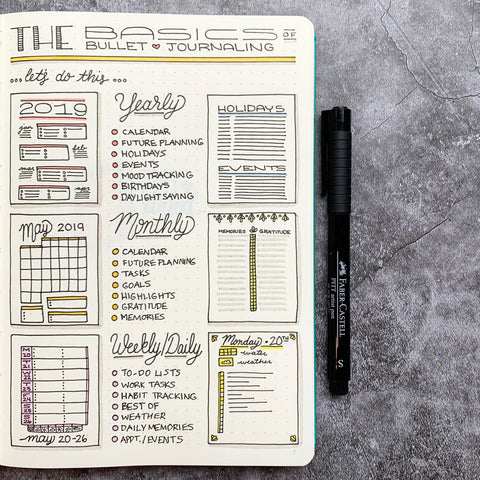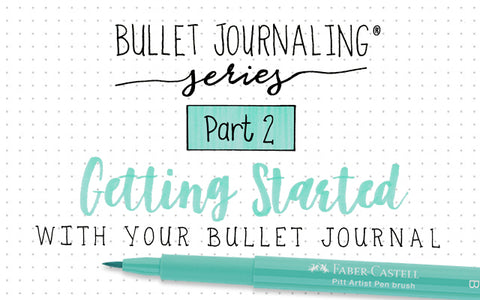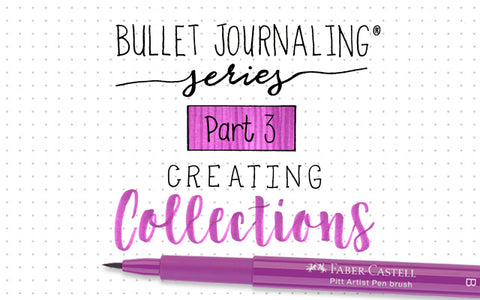Bullet Journaling® Series Part 1: Intro to Bullet Journaling

Bullet Journaling for Beginners!
The practice of expressing our thoughts and needs on paper has been around for millennia, but when a concept called Bullet Journaling® was introduced, journaling as we knew it shifted. Throughout the last few years, the popularity of Bullet Journaling has flourished into a lifestyle, having all of those on the outside of the trend curious. What even is Bullet Journaling? Why would I need a Bullet Journal®? The man behind the method is Ryder Carroll; digital product designer, New York Times best-selling author, and inventor of The Bullet Journal Method.
On the surface, Bullet Journaling is a way to keep track of your daily schedule and tasks; but its purpose exceeds that. Bullet Journal’s website states the method is best described as a mindfulness practice disguised as a productivity system. It’s designed to help you organize your what while you remain aware of your why.

Combating learning disabilities and the standard struggles of human existence, Carroll developed The Bullet Journal Method as the solution for productivity and organization. The analog system of Bullet Journaling disrupts the information overload that consumes modern society. According to a study done by researchers at the University of California San Diego, it is believed that we are exposed to the equivalent amount of approximately 34 gigabytes of information every single day. This is where the need for a planner may come in. The secret to Bullet Journaling; however, is its purpose to exceed basic organizational expectations, reminding us of personal tasks we may neglect. Yes, we are remembering to buy groceries and pay our bills but are we still monitoring our goals or remembering to take care of our mental and physical health?
The sensation of Bullet Journaling evolved into Carroll publishing the official book “The Bullet Journal Method.” He encourages you to: track the past, order the present, design the future. What begins as a simple method of writing logs and tasks and organizing through bullets and signifiers, can grow into an outpouring of artistic expression and mental reflection; organizing your what while you remain aware of your why.

It is easy to get overwhelmed by what seems to be a complex approach to organization and self-enrichment but broken down and simplified you will find Bullet Journaling can be an easy and enjoyable therapeutic tool.
To get started, be sure to visit the official Bullet Journal website for more information and stay tuned as we will continue our Bullet Journal series, diving into the detail and design behind the world of Bullet Journaling.
Want to learn more? Continue reading our Bullet Journaling Series!
 |
 |
| Bullet Journaling Series Part 2: Getting Started with your Bullet Journal |

